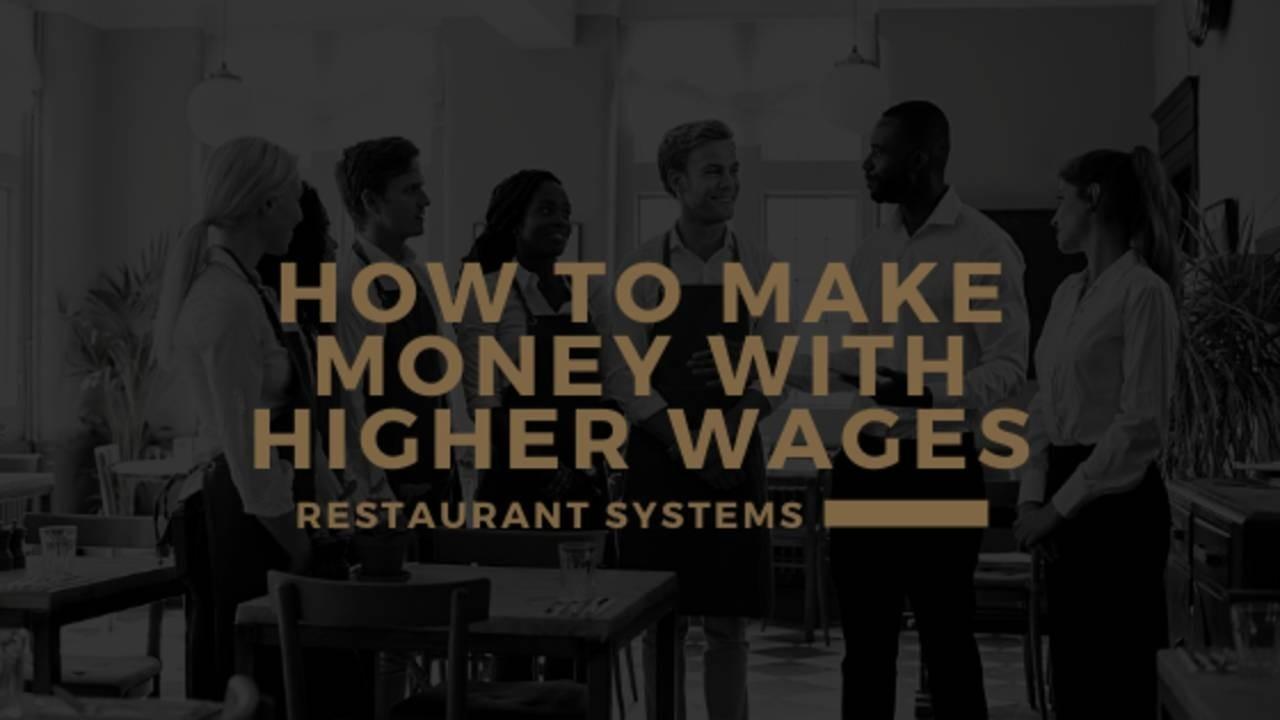How to Overcome Higher Restaurant Wages

Wages are all over the map these days. No matter where you land on the map, you are either experiencing an increase or will in the near future. A $15 minimum wage is not just a theory, it's a reality. So how do you as an operator overcome a $15 minimum wage? Click below to watch this video or scroll down to keep reading and learn what you can do to pay your employees the higher minimum wage and still have a healthy profit margin.
About Increasing Wages in Restaurants
Minimum wage is $15 in California and Washington. In New York City. It’s increasing up to that point in phases in many places. It is here. And it's not going anywhere. I’m not here to debate the political side of the increase. Instead, my job is to help you make it. How can I, as a restaurant expert, help you navigate through this?
You must understand there are not enough labor controls in this world to control or overcome a $15 dollar minimum wage. Yes, you’re going to have labor controls, but you need to understand a concept called prime cost.
If you don't know the details of restaurant prime cost, search my channel right now. I have videos that take you step by step through the prime cost formula. But in short, prime cost is total cost goods of sold, plus total labor costs, including taxes, benefits and insurance divided into gross sales.
Why is that important? Because depending on where you are, based on your core values, your price point, your quality of product, your style of service, where you are located, minimum wages, higher or lower, your prime cost is going to change based on cost of goods sold and labor.
For example, if I'm in California, I must reduce my food cost by a lot to overcome $15 minimum wage. But if I'm in Florida, or Atlanta, Georgia, I can run a high food cost because I can run a lower labor cost because minimum wage is lower.
Let's say you're following my advice and you’re aiming for a 55% prime cost. (That’s what you should be targeting if you run $850,000 in gross sales a year.) That's 10 points under the national average. Because I don't want you to run an average restaurant.
Let's say you're a restaurant that has a 30 percent COGS. How much do you have for labor? That leaves you with 25%. What if your restaurant has a 20% COGS? You could run 35% labor cost. That's 55%. One more example: you could be a steakhouse run a 40% COGS on purpose because the ring at the register is so high, even though the food cost is high. Your labor cost drops like a rock because you still have the same $15/an hour cook flipping a steak that makes $20 versus flipping a burger that makes me $8. Or you can have a 40 percent COGS and run this ridiculous shallow 15% labor cost. That's 55 percent.
If you truly want to overcome $15 minimum wage, or any rising labor costs, I don't care, you must be looking at your prime cost mix. And for many, you must reduce your food cost. Yes, you can reduce your labor costs by a little bit, but at some point in time you cannot cut yourself out of business. You have to have a certain number of servers or cashiers, a certain number of cooks to handle the business and give the service levels you want.
Start looking at those cost of goods sold: your bottled beer, draft beer, wine, liquor, etc. But for most restaurants, food is the major impact, selling 85 percent or better as food. Your kitchens are key.
Take this free restaurant evaluation. It takes about 10-15 minutes to fill out and when you're done, you’ll have a 20-25-page customized report based on your answers about your restaurant. It will show you where your gaps are in the 23 stages. There are no strings attached. Just look at it for where your gaps are and what you should be working on now.
I teach systems in my book, Restaurant Prosperity Formula: What Successful Restaurateurs Do, which you can order here.




